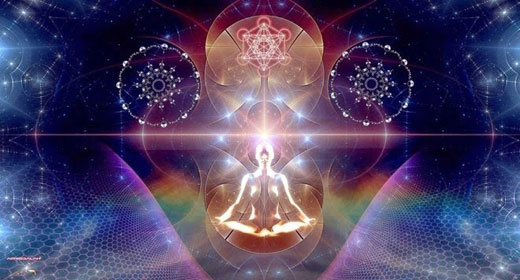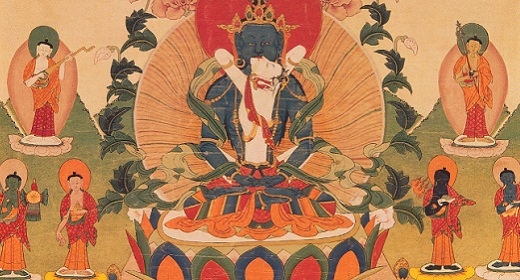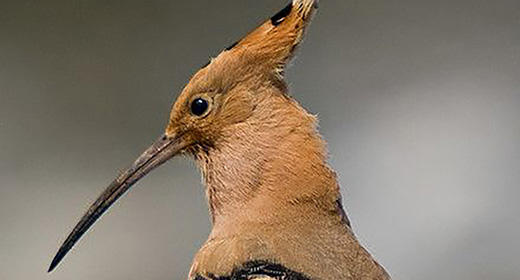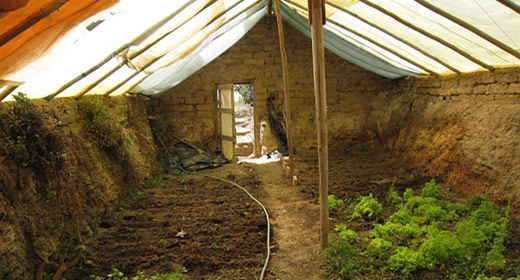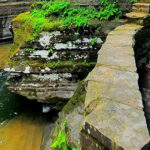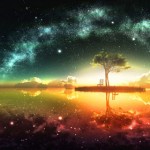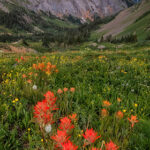The Tibetan Book of the Dead or the Bardo Thodol is attributed to the eighth century Indian Buddhist adept Padmasambhava…
who is responsible for bringing Buddhism to Tibet. In this sacred text there is described three stages that occur between death and rebirth called Bardos. Including the stages of life there are a total of six bardo states, as listed below.
The Bardo of Waking Life
The Bardo of Dreaming
The Bardo of Meditating
The Bardo of Dying
The Bardo of Experiencing Reality
The Bardo of Rebirth
The Bardo Thödol’s primary goal is to provide guidance for a person passing through The Bardo of Dying. Giving highly detailed instructions on how one can pass through these mythical afterlife states, the ultimate goal is for one to be reborn in the highest form of rebirth possible.
According to the Tibetan Buddhism, both proficient yogic practitioners as well as ordinary people can be helped to find their way through the confusing and terrifying afterlife states. If one understands and recognizes the bardo state that we reside in we can choose the most enlightened or conscious options available to us. For this reason many regard this not only as a guide for dying, but also living properly.
The teachings urge that in the bardo of the moment of dying, one is to maintain one-pointed concentration on the “clear light” and to pay close attention to releasing one’s attachments to the physical body and world. The verse to aid this state of being that was translated by Ralph Metzner in his essay “A New Look At The Psychedelic Book Of The Dead” is as follows:
Now as the bardo of dying draws upon me,
I will abandon desires and cravings for worldly objects.
Entering without distraction into the clarity of the teachings,
I will merge my awareness into the space of the Uncreated.
The time has come to let go this body of flesh and blood –
It is merely a temporary and illusory shell.

If fear and confusion occurs during this initial transistion into the Bardo of Dying due to insufficient concentration and preparation, one will wander through the “intermediate realms” of the second bardo realm. In this realm, called the Bardo of Experiencing Reality, there are visionary encounters with beings of light, similar to angels, or dark and intimidating beings, likened to demons.
The teachings of the sacred text advice not to be overwhelmed by either of the polar visions, but to remember that they are only projections of one’s own mind. They are “the reflections and projections of your mind and life, as seen in the mirror held up by the death god Yama. If you stay centered in the middle path between the extremes of dualistic judgment, you will still be able to pass through to the pure light realms of the higher dimensions.” Metzner’s translation for this guide of transition from this state is as follows:
Now as I enter into the bardo of visions,
I will abandon all awe and terror that may arise.
Recognizing whatever appears as my own thought-forms,
As apparitions and visions in this intermediate state.
This is a crucial turning point on the path.
I will not fear the peaceful and terrifying visions in my mind.
If there is a lack of training or preperation during this transisiton into the final bardo, one will lapse into unconsciousness and find itself seeking rebirth, in which one wanders about seeking ordinary existence and to find a family to be born into. This bardo ends with the process of selecting another human incarnation.

The remaining instructions in the bardo of rebirth phase consist of how to first delay being born at all, and then on choosing the best kind of human rebirth. At a point during this stage the bardo traveler will have to respond to visions of men and women copulating, but is urged by the teachings not to join the activity, though one may be tempted to do so. It is as if the message is “Do not rush into incarnation. Staying with sonscious intention at the very beginning is more likely to lead to a more conscious human lifetime.”
Ralph Metzner suggests that these visions of couples copulating are the soul’s vision of its own conception. At this choice point, the soul chooses which couple to have as parents. The Bardo Thödol says that if the voyager feels attraction to the female and aversion to the male, he will be reborn as male, and vice versa. To summarize this stage, the delay of return from the light and wisdom filled heaven-worlds should be held as long as possible, until an infinite amount of time has elapsed, and reincarnation feels natural. At the time of that choice Metzner’s translation of the sacred text’s guidance is as follows:
Now, as the bardo of rebirth dawns upon me,
I will hold one-pointedly to a single wish –
Continuously direction intention with a positive outlook.
Delaying the return to Earth-Life as long as possible.
I will concentrate on pure energy and love,
And cast off jealousy while meditating on the Guru Father-Mother.
This rebirth phase ends with the physical birth of the traveler when we start cycling through the three bardos of waking life. We hope this sheds insight into the mystical beliefs of those who practice meditation, yoga and psychedelic voyaging and that it aids in both life and death transitions.


